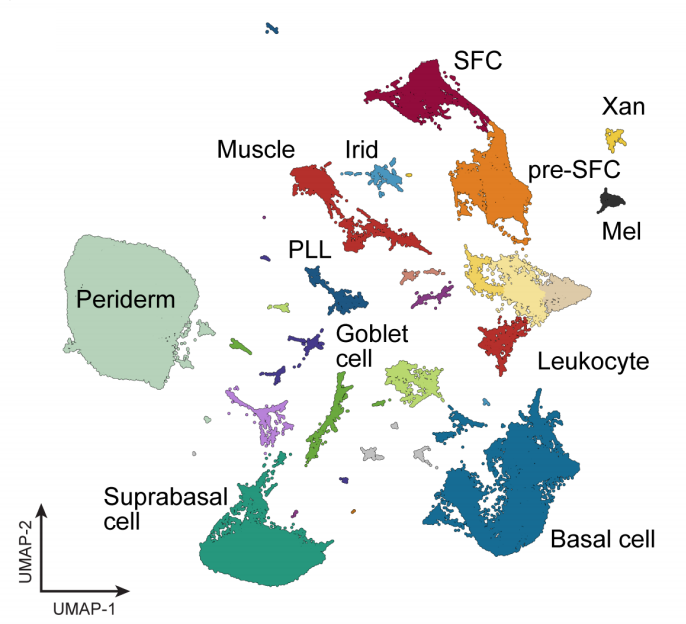Abstract
Regulation of neural crest derived pigment cells and dermal cells that form skin appendages is broadly similar across vertebrate taxa. In zebrafish, organized pigment stripes and an array of calcified scales form simultaneously in the skin during post-embryonic development. Understanding mechanisms that regulate stripe patterning and dermal morphogenesis may lead to discovery of fundamental mechanisms that govern development of animal form. To learn about cell types and potential signaling interactions that govern skin patterning and morphogenesis we generated and analyzed single cell transcriptomes of skin with genetic or induced defects in pigmentation and squamation. These data reveal a previously undescribed population of ameloblast-like epidermal cells, suggest hormonal control of epithelial-mesenchymal signaling, clarify the signaling network that governs scale papillae development, and identify the hypodermis as a crucial pigment cell support environment. These analyses provide new insights into the development of skin and pigmentation and highlight the utility of zebrafish for uncovering essential features of post-embryonic development in vertebrates.
* co-first authors
